The human body is a complex mechanism, all particles of which closely interact with each other. The connecting link of all body cells is blood. Analyzing its various parameters, the doctor draws conclusions about the state of human health, reveals possible violations in the work of certain systems. Such a characteristic as blood viscosity determines its fluidity. Its deviation in the direction of both increase and decrease leads to a violation of redox reactions in all tissues of the body. The first to “react” the indicators of the arterial pressure of a person, the load on his cardiovascular system increases.
Content
Blood plasma viscosity
The term “blood viscosity” characterizes the ratio between the amount of its uniform elements (leukocytes, red blood cells, platelets) and plasma volume.
What affects human blood viscosity
The indicator of blood viscosity is influenced by many factors, the most important of which are:
- Hematocritus is part of the total blood volume that red blood cells make up. The higher the content of red blood cells, the higher the viscosity of the blood.
- Blood temperature.
- The lumen (diameter) of the vessels. With the expansion of blood vessels, the blood flow slows down, blood cells with proteins and each other occurs. As a result, an increase in blood viscosity. The narrowing of the lumen leads to a decrease in the level of hematocrit, as a result of which the viscosity of the blood becomes below the norm.
- Blood temperature. With an increase in blood temperature by 1 ° C, blood viscosity increases by 2%.
The degree of viscosity is also affected by the flow of any infectious processes. This kind of violations also increase blood viscosity.

How to determine blood viscosity
Although such a criterion as blood viscosity is a traditional clinical (general) blood test, it is it that is almost always the first stage of diagnosis. Deviations in its indicators are the reason for additional research, including:
- test for hematocritus (determines the share of red blood cells in the volume of whole blood);
- analysis for D-Dimer (shows the degree of activity of thrombosis processes and thrombus);
- coagulogram (blood coagulation analysis).
Moreover, to determine the viscosity of the blood, there is a separate analysis. You should not confuse this study with other tests for blood testing in the context of certain indicators - the analysis of blood viscosity is called. Assess the necessary criterion allows a special device - viscosimeter. The principle of research is based on assessing the pace of blood movement in relation to the speed of water. During the analysis, water is placed in one of the pipes, and biomaterial is placed in the other. Further, both containers are connected, forming a vacuum. Columns of water and blood begin to move, which allows us to draw conclusions about blood viscosity.
In the process of conducting a blood viscosity of blood using a viscometer, the norm is:
- from 4.3 to 5.4 divisions of the scale - if a man was subjected to the study;
- from 3.9 divisions of the scale to 4.9 - if the analysis was carried out for a woman.
Deviation from these indicators in the direction of increase or decrease allows us to talk about increased or reduced blood viscosity.
In the absence of the possibility of determining blood viscosity using special equipment, the conclusion about this indicator is often made on the basis of hematocrit indicators. The optimal content of red blood cells in the range is 40% - 48% (for men) or 36% - 42% (for women).
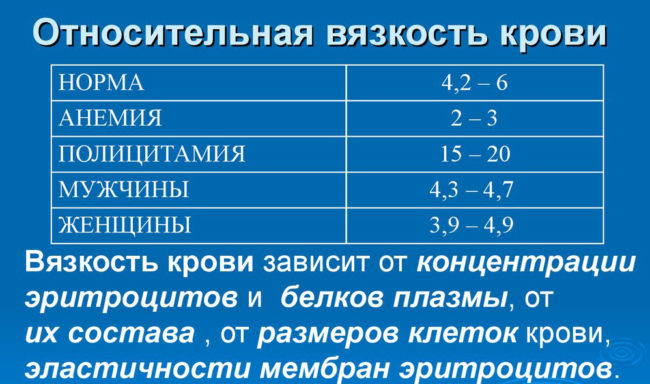
Causes of deviation from the norm of blood viscosity
Deviations in blood parameters do not occur spontaneously. What reasons provoke a change in the composition of the blood and, as a result, an increase or decrease in its viscosity?
An increase in blood viscosity cause:
- Enzyme failure. This feature of the body can be both innate and to be acquired. With this pathology, the human body does not produce a sufficient number of enzymes in the digestive tract. As a result of this, the breakdown of food does not occur in full, and the blood is slagged by decay products. As a result - gluing red blood cells and insufficient intake of oxygen in the tissue.
- The low quality of the water that a person drinks. Such, at first glance, a trifle negatively affects the composition of the blood, which leads to an increase in the viscosity of the latter.
- Increased load on the liver. A meager nutrition, in which the body does not receive a sufficient amount of vitamins and mineral elements, in combination with an increase in the load on the main “filter” of the body leads to an increase in the content of the blood elements in the blood. A negative effect on the liver has, for example, a long -term use of drugs, passion for sharp, smoked and salted dishes, alcohol abuse.
- The lack of fluid in the body. Dehydration can be provoked, for example, by intense physical exertion (if you do not consume enough water), diarrhea or vomiting. Lack of liquid is also noted for diabetes.
- Deviations in the work of the spleen The normal ratio of blood and plasma cells can also disrupt.
- Unstable nutrition (excessive consumption of carbohydrates, legumes or cereals).
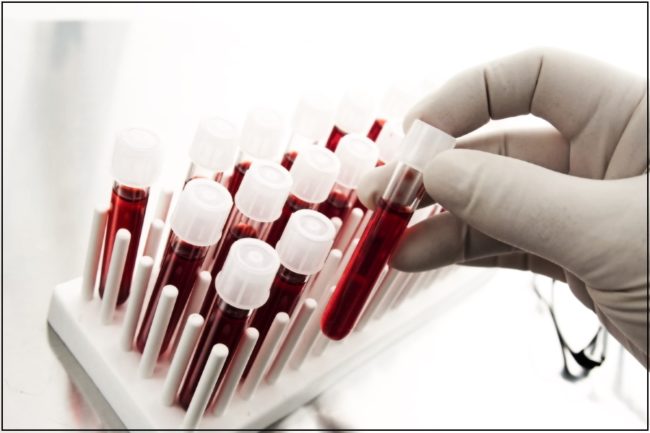
Reduced blood viscosity can be provoked:
- A long intake of drugs, which include acetylsalicylic acid.
- Increased doses of drugs based on heparin.
- Strong blood loss.
- Anemia.
- Deviations in the liver, as a result of which the synthesis of prothrombin and fibrinogen is reduced.
- Pronounced allergic reactions having a severe course.
- Disadvantage of vitamin K.
- Lack of calcium.
- Oncological diseases in which the synthesis of blood cells decreases.
Hot baths and prolonged work also contribute to a decrease in human viscosity. Blood thinning also provokes an increase in body temperature, an increase in the content of oxygen in the blood.
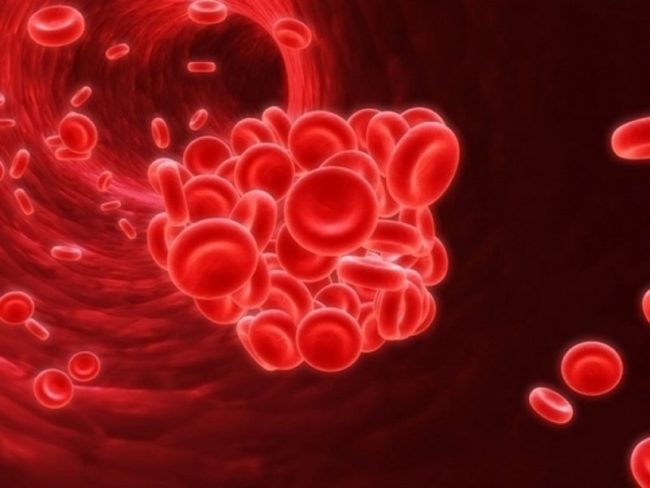
Manifestations of increased and reduced viscosity of blood plasma
Violation of blood indicators rarely does not have clinical manifestations. Depending on the severity of the violations, the overall picture will also be different.
Symptoms of increased blood viscosity
You can suspect increased viscosity indicators before the appropriate blood test. Very often, patients with such a violation have complaints about:
- decrease in the quality of vision;
- headaches, noise in the ears;
- a feeling of dry mouth;
- feeling in the legs, numbness of the limbs;
- increased fatigue, weakness, decrease in performance;
- irritability, bad mood, apathy;
- perhaps a feeling of goosebumps running through the body.
Symptoms of blood viscosity decrease
Liquefaction of blood leads to its more active movement in blood vessels. With a slight decrease in blood viscosity, the clinical signs of this phenomenon may be absent. Moreover, if on the eve of blood donation you suffered an infectious disease or took a hot bath, the analysis results will also be distorted. If blood thinning is caused by pathological processes, then in combination with a low coagulation indicator there is a danger of bleeding, which will be very difficult to stop. The threat also lies in the fact that hemorrhages can be of an internal nature - in joints, subcutaneous bleeding (manifest as hematomas).

High blood viscosity treatment
It is worth making a reservation that in each case, therapy is selected individually, given the causes of the violation. The use of folk methods of treatment is allowed as an auxiliary link in therapy, but not as the main one.
Preparations to reduce blood viscosity
- Medicines based on acetylsalicylic acid (for example, aspirin-cardio, cardiomagnil, cardiopyrine). These medications not only thin the blood, but also have a thrombolytic effect.
- Preparations that reduce blood coagulation and prevent the formation of blood clots are heparin, churantil.
- Medicines for strengthening and restoring the walls of blood vessels, slowing the oxidative processes in cell membranes (dihydrocvercithic, capillar).
- Preparations for eliminating increased blood acidity (for example, alka-mine).
How to reduce blood viscosity with folk methods
- In 250 ml of boiling water, place 2 tsp. dried flowers of horse chestnut. Send the container to low heat (or water bath). When the composition boils, turn off the plate. Give a decoction to infuse in a closed container for 6 hours. A single portion is the full volume of the finished decoction. Drink the product daily for 15-20 days.
- 2 tbsp. l. Dun the Donnik in a glass of boiling water. Cross the vessel to a small fire. Tash the grass for 10 minutes. Cool and strain the product. Take a decoction three times a day for 50 ml.
- 1 tsp. Pour willow bark with 2 cups of boiling water. Cook the composition over low heat for 20 minutes. Leave a decoction for 4-5 hours. Take a home medicine for 150-200 ml three times per day.
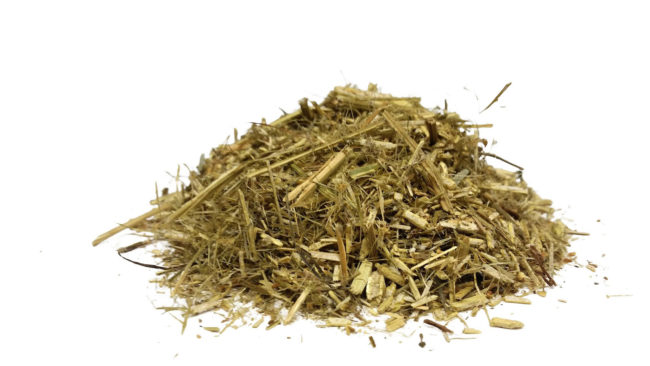
Blood thinning and power rules
An important role in the successful therapy for a decrease in blood viscosity is played by the patient’s nutrition. It should be as balanced as possible by all criteria - both fats, proteins and carbohydrates, and saturation with vitamins and minerals. The diet must be present:
- Loof meat varieties.
- Sea fish.
- Dairy products, eggs.
- Olive and/or linseed oil.
- Onions, garlic, ginger, cinnamon.
- Almond.
- Vegetables - beets, cucumbers, tomatoes.
- Fruits and berries - oranges, lemons, blueberries, cherries, strawberries, peaches, white and red currants, gooseberries, cranberries.
- Gorky black chocolate, coffee, cocoa.
At the same time, products such as bananas, buckwheat, white cabbage should be refused. They contribute to increasing blood viscosity.
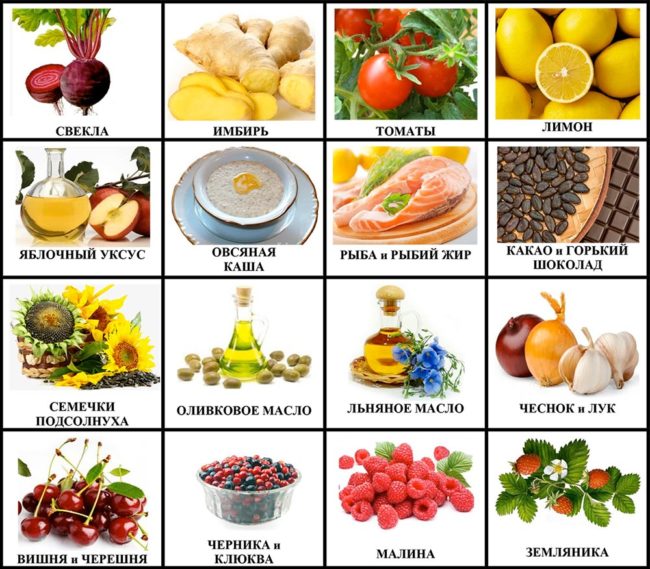
Dreaming of reduced blood viscosity
Both increased and reduced blood viscosity requires correction, although this violation is less common. First of all, you should start with the correction of the diet.
The menu must be present:
- Leafy vegetables (cabbage, salad leaves, spinach), carrots, broccoli.
- Legumes.
- Grain.
- Banans, oranges, aiva, viburnum, black currants, blackberries, watermelons.
- Buckwheat porridge.
- Black -fruited mountain ash. With this product, it is worth being careful hypotension - the mountain ash reduces blood pressure.
It will also not be superfluous to take vitamin K and calcium preparations. The phytotherapy also gives a good result - increasing the density of blood contributes to the use of knotting decoctions, dioecious nettle, yarrow. If you decide to turn to the help of herbs, do not forget to carefully study the contraindications to the use of a particular plant, dosage and possible side effects.



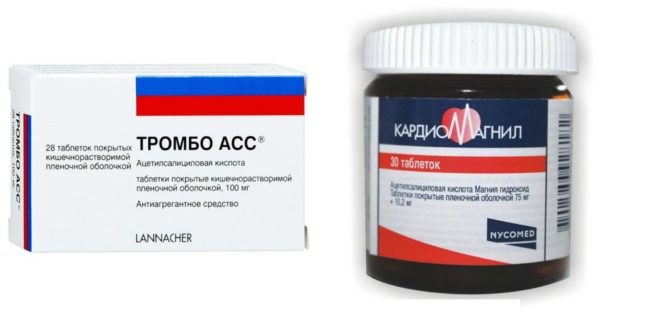







Comments
a couple of years ago, there was no side of metrogils from the same problem, there were no side effects ...
I’m not a fan of peeling at all, it saves from acne of metrogil, it also smoothes it ...
Great article! ...
I take the second course of the Capsules Climafite 911. The tides went very quickly. It became calmer, irritability went away and I sleep well ...
i also noticed - it is worth nervous, everything immediately affects the face. Therefore, I try to avoid conflicts and unpleasant people. Of the creams, I like Miaflow from wrinkles - smoothes not only small wrinkles ...